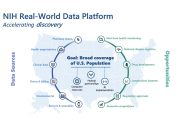
The Centers for Disease Control (CDC) reported on December 18 that autism disorders increased 57 percent in only four years. At the end of 2006, data indicated that one in 110 American children had an autism disorder that was diagnosed by the time the child was eight years old.
The CDC estimates that autism affects one in 315 girls and one in 70 boys, indicating that between four-to-five times as many males suffer from the condition as girls. Data comes from an analysis of child evaluations done in 11 states, and the numbers match the results of a 2007 telephone survey reported last October.
But is the incidence of autism on the rise or is the diagnosis of autism merely becoming more common? Are doctors and parents getting better at recognizing this disorder or is the label just being applied more freely today when there is no actual increase in its occurrence?
"At this point it is hard to say how much is a true increase and how much is improved identification," CDC behavioral health scientist Catherine Rice, Ph.D., told a news conference. Rice is the chief author of the CDC report on autism.
Rice noted that there is no simple way to explain or account for the perceived increase in autism. Advocates for autism research are quick to point to the data as justification for investing more money in the field.
WebMD reported on December 18 that Geraldine Dawson, Ph.D., chief science officer of the Autism Speaks advocacy group stated: "Two decades ago we were looking at a prevalence of one in 5,000 children. Now we’re looking at one in 100. That really is a staggering increase."
Dawson believes the data warrants a very large increase in federal spending on autism research and treatment. She said: "The question is what will it take for the federal government to begin to respond to this crisis. President Obama during the election campaign made a promise that there would be a billion dollars spent every year on finding the causes of autism. We feel that this kind of data coming from a CDC study really requires that level of response."
Rice evidenced a similar sense of urgency, saying, "The CDC considers autism spectrum disorders to be a significant public health issue. This report underscores the need for a coordinated and strong response to improve lives of people with ASDs."
The CDC study found that a significant majority (70 percent) of parents who have a child with autism had voiced concern about the child’s development when the child was younger than three years of age. Most noticed something amiss by the time the child was two years old.
Despite this early parental concern, the average age at which a child is diagnosed with autism is four-and-a-half years. Rice noted: "The American Academy of Pediatrics has encouraged routine screening of children for autism at ages 18 and 24 months. Pediatricians should listen to parents if they have a concern, but also proactively follow the screening recommendations regardless of whether parents have concerns."




